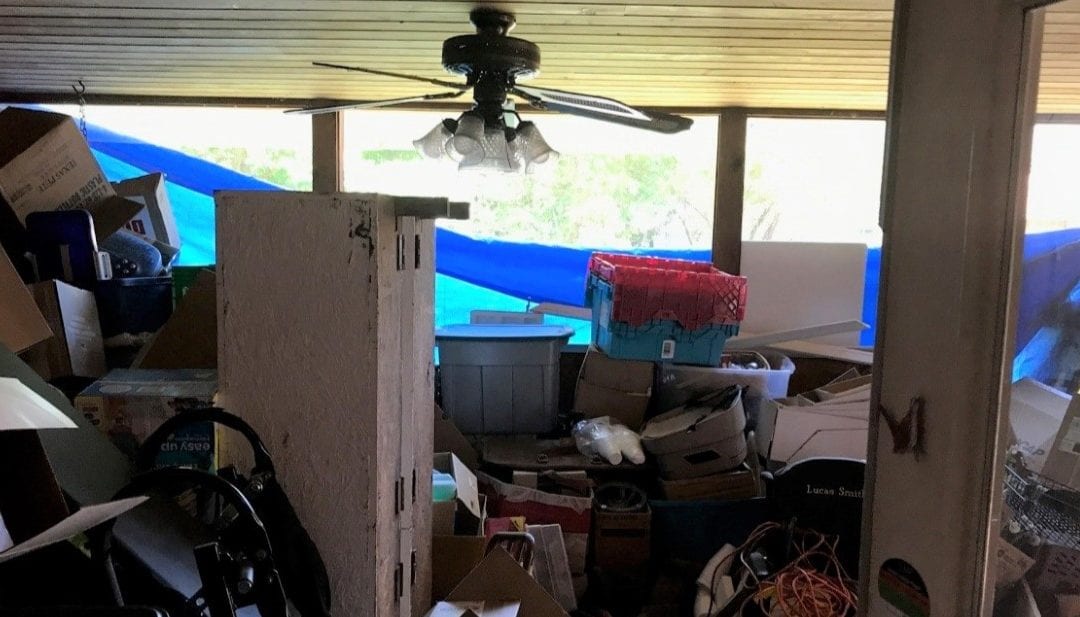Compulsive hoarding disorder is more recognized than ever, thanks to hit tv shows like Hoarding, Buried Alive that attempts to help individuals defeat their unhealthy obsession with hoarding. Although some find watching the reality hit to be enjoyable, very few people would actually consider purchasing a hoarder home as their primary residence. Because of this only real estate investors are looking to buy these properties. But not all investors are willing to buy a hoarder home, meaning there is far less competition for these types of properties.
Why seek out a property with rooms piled with junk, infestations, and other issues only to be revealed during the clean-out? The low price. Real estate investors can make a large profit for purchasing and renovating a property no one else wants to deal with.
Tip #1 You’re Gonna Need a Bigger Dumpster
People with compulsive hoarding disorder hold on to things that they think will be useful for them in the future and have extensive collections. Although some items found in a hoarder’s stash are valuable and once they are sanitized can be sold, more often than not most of it is trash. Investors need to be prepared for a time-consuming clean-out that requires multiple trips to the landfill.
Below are some of the most common items found in a hoarder’s stash:
- A large volume of trash
- Furnishings
- Clothing
- Small appliances and electronics
- Collections
- Large junk like old cars
- Overgrown landscaping
Tip #2 Expect an Extensive Demo
When inspecting typical flip properties, you can usually know ahead of time if you can salvage materials like flooring and framing. Hoarder homes on the other hand, are cluttered with stuff and you won’t know the condition of many features of this house until the clutter is removed. To prepare for any deficiencies in your property, you should allocate extra funds for cleaning and repairs when filling out a loan application.
Hoarder homes are rarely cleaned and maintained and because of that they deteriorate faster than other homes. Parts of a hoarder home that are usually damaged and need replacing include:
- Flooring and subfloors
- Plumbing fixtures such as bathtubs
- Appliances
- Drywall and framing
Tip #3 Water Damage is Common
Hoarder homes have more mold issues than other homes because water and leaking pipes often remain unseen behind and under the clutter. When these problems are not dealt with, mold can spread along the wood into other rooms in the house. As you’re doing your property inspection you’ll need to get an idea on the extent of the water damage so you can plan on the actual demo and construction costs. If you’re getting financing for a fix and flip loan, your lender will ask for an estimated construction budget and if you underestimate the amount of mold damage, you might get stuck paying for repairs out-of-pocket.
How to Spot Water Damage in a Hoarder Home
- Look for rotten wood
- Inspect for rust stains around appliances and where pipes enter the house
- Use a moisture meter (even in rooms without plumbing)
Tip #4 There are Going to be Infestations
Rotting wood and unsanitary living conditions are common in hoarder homes and often attract insects and other animals. Those living with compulsive hoarding disorder collect and bring a lot of stuff into their home, making it easier for pests and other critters to find a way in. Once they make their way into the home it’s easy for them to hide amongst the piles of stuff. When you buy a hoarder home don’t be surprised if you come across any of the common household pests below.
Hoarder Home Infestations and How to Handle it
| Common Household Pests | How to Handle it |
|---|---|
| Bed Bugs | Have structure professionally heat treated |
| German Cockroaches | Contact professional pest control, don’t use bug bombs which will just spread to other rooms. |
| Fleas | Remove carpeting, contact professional pest control |
| Bees | Have the hive relocated by a beekeeper |
| Wasps, hornets, yellow jacket nests | DIY with wasp spray from your local hardware store |
| Mice and Rats | You can DIY this, use traps |
| Other Animals | Skunks, squirrels, raccoons, and snake infestations, contact local animal control |
Tip #5 You Might Need Professional Help
If you find yourself face to face with a biohazard that can potentially put you or your crew in danger, call an expert. Professional cleaners are trained to safely clean and remove any biohazards that could be in your property. Trying to handle a biohazard on your own and not disposing of it properly can expose you and others to diseases like HIV and hepatitis, infections, and chemical poisoning.
Contact an expert if you find any of these biohazards in your property:
- Human blood and materials saturated with blood
- Animal waste
- Bodily fluids
- Dirty diapers
- Needles

